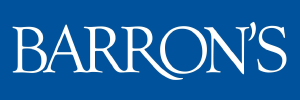


© 2004 Dow Jones & Company, Inc.
It may be hard to fathom, but Starbucks can brew and sell a lot more than it does now.
That's right. Although those famous green-and-black mermaid logos are plentiful on big-city streets, the Seattle-based java empire is probably only halfway to its saturation point in North America. Not to mention the rest of the globe, where growth opportunities are huge. And Starbucks is trying to make existing stores more profitable with new drive-throughs, along with Internet access and new music offerings.
Starbuck's stock, up 2% Wednesday, remains 8% off its all-time high.
But as its valuation hovers near reasonable levels, some growth investors say this might be a good time to flirt with Starbuck's barista again. "We think they will beat their earnings guidance in the next 12 months," Says Rick Drake, a portfolio manager who owns the stock in the ABN AMRO Growth Fund. "If the economy goes downhill fast, people will continue to buy their products."
Starbucks historically has grown by opening new stores. The company has 5,882 North American locations and it could double that over the next decade, says John Glass, an analyst at CIBC World Markets. (For instance, Toledo, Ohio, whose population is 310,000, has just one free-standing Starbucks.)
In a June study, Glass said North America will supply 90% of Starbucks' earnings in the next two to three years.
But the long-term opportunity is global. Starbucks has 2,365 international locations and says it would reach global saturation at 25,000. While Starbucks has stumbled with partnerships in Japan and high operating costs in Europe, it expects international operations to turn profitable in the current fiscal year, which ends in September. The company and its partners see big opportunities in places such as southern China, Austria and Switzerland.
"Clearly they have not penetrated most of the markets they are in," says Kristine Koerber, an analyst at WR Hambrecht.
Increasing traffic at current cafes is key, too. How to get it? Drive-throughs. Starbucks is including drive-up services in roughly one third of its new North American stores, and will retrofit some older ones, too, says Dan Geiman, an analyst with McAdams Wright Ragen in Seattle. Caffeine-dispensing windows "produce some of the highest returns on investment for the company," says Koerber.
Adds Glass: "Drive-throughs are an enormous potential they did not have before."
Despite competition from rival Dunkin' Donuts (the leader in hot regular-coffee sales last year among quick-service restaurants), Starbucks addicts are likely to pay a premium for the "Affordable luxury" of the Starbucks experience - even is Starbucks raises prices for the first time in four years, as management hints it will.
Starbucks' relentless efforts to attract new customers should help expand its customer base (it currently has a 7% share of all U.S. coffee consumption) and boost margins in the next year, says Jay Desai, president and founder of the Institute of Global Competitiveness, a management think tank near Raleigh, N.C.
He says its successful ideas include Wi-Fi connections in its stores and expansion plans in minority neighborhoods where "there are millions of dollars of disposable income," says Kimberley Thomson, a spokeswoman for Johnson Development. (Started by retired basketball star Magic Johnson, the development company helps build Starbucks stores and other enterprises in inner cities.)
Starbucks also can expand its food service, restaurant and hotel sales through a relationship with Sysco, which distributes to food-service customers. Starbucks products reach less than 5% of Sysco's accounts, analyst Koerber estimates. Another opportunity: Starbucks is converting cafes in Border Books and Music stores to Seattle's Best Coffee cafes, a subsidiary.
And then there is valuation. Starbucks' shares have always expensive compared with the broader market (see At A Glance). But based on projected fiscal 2005 earnings, the stock changes hands just below its median price-earnings multiple of 39.4 times forward earnings over the past five years, according to Thomson Financial Baseline.
The shares also trade nearly in line with their median 3.2 times sales, and the company throws off 53 cents in free cash flow per share - the most it has produced in the past five years, according to Baseline.
Dan Geiman thinks the stock could reach 55 by the end of next year, which is nearly 20% higher than the current price near 44.
Of course, the competition is fierce out there, and Starbucks may lose its cachet among consumers if the stores become even more ubiquitous than they are now. And it has had some problems expanding overseas, so its global growth plans could hit some headwinds, too.
But Starbucks has proved the naysayers wrong many times in the past, and its track record suggests it's likely to keep giving shareholders caffeinated returns.